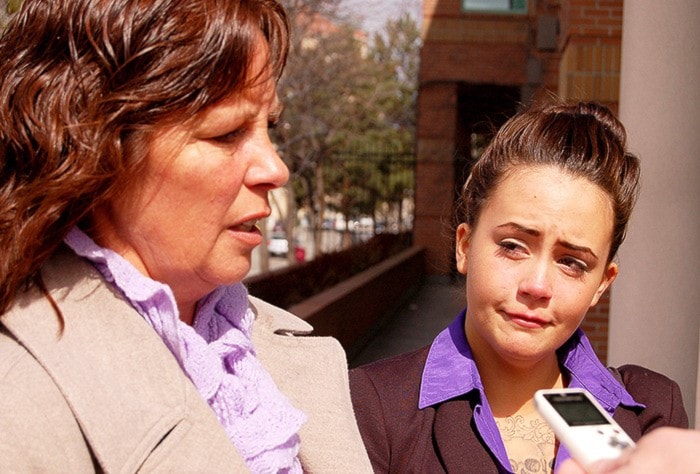KATHY MICHAELS
Black Press
Taylor Van Diest’s family let out muffled sobs of relief Saturday morning as a jury of 12 convicted Matthew Foerster of first degree murder.
The five-woman, seven-man pool of jurors returned to a Kelowna courtroom with the unanimous decision after just over 24 hours of deliberation.
To have reached that verdict they had to conclude that Foerster, 28, was intending to sexually assault Van Diest, 18, when he fatally injured her on a set of secluded train tracks Oct. 31, 2011 in Armstrong.
When Foerster was asked by Justice Peter Rogers if he had anything to say following the jury’s decision, defence lawyer Lisa Helps declined on behalf of her client.
Throughout those final moments Foerster, in a pressed dress shirt and tie, stared ahead in the same manner he spent the entirety of the two-week trial — appearing to be on the brink of some emotional outbreak that never materialized.
He will face 25 years in jail without possibility of parole — the minimum sentence for the crime for which he was convicted.
His silence did not surprise Taylor’s mother, Marie Van Diest, although she said it was telling.
“The fact he chose not to speak, speaks volumes about how cowardly, dysfunctional and deviant this individual really is,” she said. “He needs to be put away and not have that behaviour exist ever again.”
The verdict marks the end of the legal process that started when Van Diest was murdered while walking to meet friends for some trick or treating at around supper hour that Halloween. But, Marie Van Diest pointed out that it’s not going to heal the wounds Foerster created.
“I think we can try to carry on with life with a different sense of normal. We’re just going to have to recreate our lives,” she said.
“Healing… it’s going to be a very long time. I don’t think that a person ever heals completely from something like this. There’s never closure because we’ll never have Taylor back.”
The silver lining is that “no other girl will meet the same fate (Taylor) did.”
“We’re just happy that animal will be off the streets for a long time,” she said. “Not long enough, for me, but it will suffice.”
Taylor’s twin sister Kirstie said she too was relieved by the verdict, adding that “it was the best outcome we could get, given the circumstances.”
During the two-week trial both women, flanked by more than a dozen other family members and friends, endured gruesome witness testimony about Van Diest’s final night.
A forensic pathologist, the emergency room doctor who treated Van Diest and even those who came across her battered body on the railway track described how the five-foot-four, 126-pound teen had been brutally beaten that night.
She had ligature marks across her neck that Crown counsel Iain Currie said were likely caused as Foerster tried to subdue the teen. She also suffered a skull contusion as part of what looked to be one of six blows across the top of her head.
The positioning indicated she was down on the ground when the blows were levied, and that she had raised her hands to her head to protect herself.
Evidence of Van Diest’s fight for survival are what ultimately convicted Foerster, said Currie in his closing arguments. At some point, despite the significant size difference between she and her attacker, she scratched his neck and collected the DNA that tied him to the scene.
She also had written text messages to friends that she was being creeped — teen speak for being looked at in a sexual and unwanted way, highlighting the fact that Foerster wasn’t just looking for a date, which is what his defence hypothesized.
